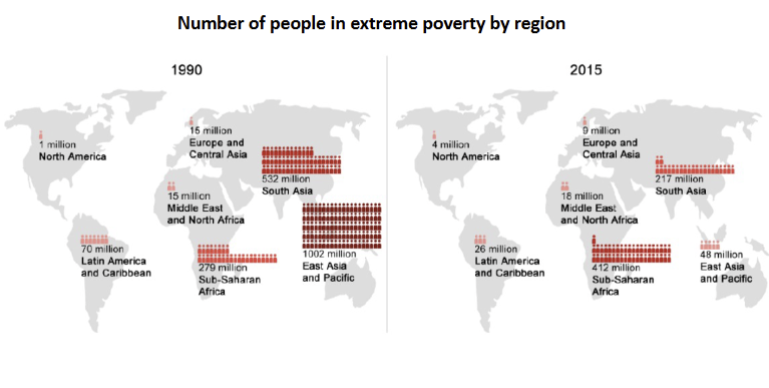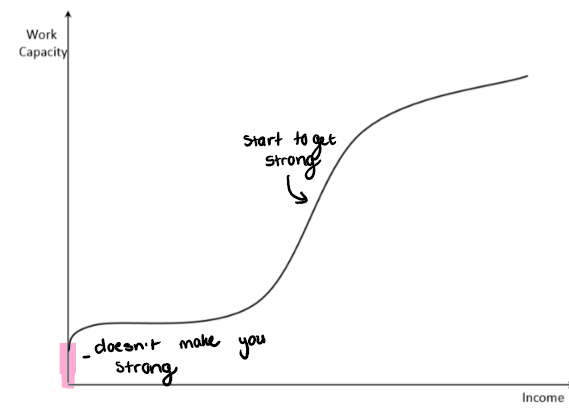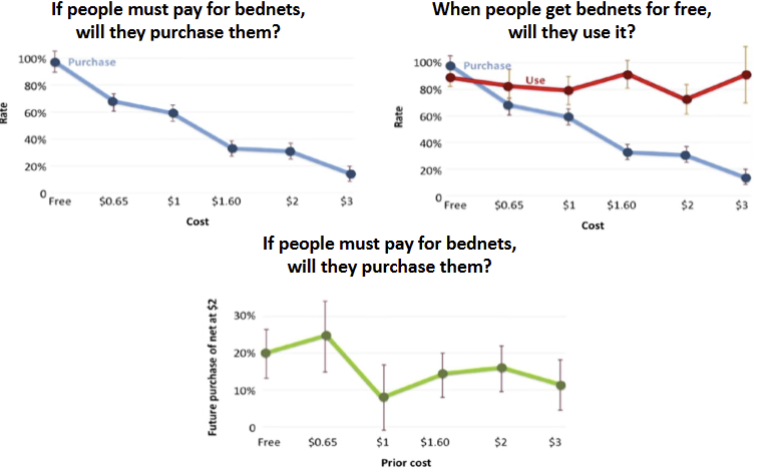6. Poverty
1/14
There's no tags or description
Looks like no tags are added yet.
Name | Mastery | Learn | Test | Matching | Spaced |
|---|
No study sessions yet.
15 Terms
What is poverty?
To live in poverty is to lack the resources needed to meet basic needs
What are the different types of poverty?
Monetary dimensions (economic poverty):
income
consumption
Non-monetary dimensions:
health and nutrition: nutritional status of children, incidence of specfic diseases, life expectancy, etc.
Education: rate of literacy, years of schooling, etc.
Subjective perceptions of poverty
What is absolute poverty?
Subsistnce poverty: poverty as having insufficient income, or insufficient food, housing or clothing necessary for survival
Min amount of money required to meet basic needs
Absolute poverty line: - US$1.90 per person per day (World bank)
Relative poverty
inequality view of poverty: inability to participate in the customary activities of the society
An individual is in relative poverty if their income (consumption) places them in the poorest share of the population
What is the global poverty trends?
global share of ppl in extreme poverty ($1.90) has decreased consistently since 1990
The number of ppl in poverty as measured by the higher international poverty lines of US$3.20 and US $5.50 increased between 1990 and 1999 but has been falling since
Where do poor people live?
while at a global level extreme poverty has declined consistently since 1990, this trend has not occured evenly everywhere
The proportion of extremely poor people decrease in 113 countries since 1990 but it has increased in 73 countries
In 1990, 52% of worlds extremely poor ppl lived in countries in the East Asia and Pacific region; in 2015 they represented 6%
China and India are responsible for the greatest reductions in extreme poverty since 1990
Extremel poverty is increasingly becoming concentrated in Sub-Saharan Africa
in 1990: 279 million extremely poor people → 2015: 400 million regions
By 2015, 50% of the world extremely poor live in this region

How could we go about ending poverty?
Official development Assistance (ODA) to Sub-Saharan Africa increased in 700% during period 1960-2016
2018 region received about 35% of global ODA
Extreme poverty is increasingly becoming concentrated in Sub-saharan Africa
1990: 279 million extremely poor people → 2015 4000 million extremely poor
GDP per capita in the region is not making much progress
The GDP per capita in the region in 2006 was as the same level it was mid 2970s
What are we doing wrong about fixing absolute poverty?
WE are asking the wromg questions: too broad
what is the ultimate cause of poverty
How much faith should we place in freemarkets
Is democracy good for thr poor
Poverty is very complrx → focus on understanding the effect of specific poverty reducation interventions
Poor countries are poor bs they are hot, infertile, malaria infested, often landlocked; this makes it hard for them to be productive without an initial large investment to help them deal with their endemic problems. But they cant pay for the investment precisely because they are poor
poor countries are in poverty trap
Foreign aid is key: it can kick start a virtuous cycle by helping poor countries invest in these critical areas and make them more productive. higher incomes will generate further investments → virtuous cycle will become continuois
What is the capacity curve?
2 MIT authors used nutrition to explain poverty traps
Focusing on the minor parts of it
How income helps to create work capacity for tomorrow
theyll make more money and be able to participate
45o line represents whether they will have more income today or tomorrow
Concave relationship - no poverty trap - everyone gets rich - build yp labour market- above 45O line means you are able to do more
Capacity curve < 45O
income today < income tomorrow
don’t have to spare
infinite amount of going down
hard to leave w/o support
Capacity line > 45o line
no poverty trap

When does a poverty trap emerge?
The S-Shape curve intersects the 45o line from below
For poor ppl, income grow slowly, so slowly that income to
morrow is belwo income today → poor become poorer
At high levels of income, the growth of income increases: income tomorrow is greater than income today: middle class and the somewhat rich continue to be rich
Barret et al, 2016 - poverty trap - situation where poor initial conditions induce behaviours that reinforce poverty
SO the general idea is that being in a poverty trap is what causes future poverty
What are other types of poverty traps?
Nutrition: the very poor esrn less than they need to be able to do significant work, but those who have enough to eat can do serious agricultural work
Health: workers living in a deprived environment may miss many workdays; children may be sick often and unable to do well in school
Natural disasters: frequent natural disasters may not allow individuals to accumulate assets
Savings: if individuals are too poor to save, they cannot accumulate capital and this their incomes will be stagnant
What are the policy implocations of a poverty trap
A poverty trap opens the possibility of a “big push”: a small action could have big benefits → it might be the socially optimal thing to do
Sachs (2005) if the rich would had committed $195 billion in foreign aid per year between 2005 and 2025, poverty could have been entirely eliminated by the end of this period
Without poverty trap: a onetime gift does not boost anyones income permanently it will not change where they are eventually headed
everyone becomes rich
This is countered by the 2 opposing views:
William Easterly (2006) : NYU
Dambisa Moyo (2009) : World Bank
What is Easterly 2006 and Moyo 2009 view on ending poverty?
2 influential ainti0aid public figures, the Elusive Quest for Growth and The White Man’s Burden and Dead Aid, respectively
They argue that aid doe more bad than good:
it prevents ppl from searching for their own solutions
it corrupts and undermiens local institutions
creates a self-perpetuating lobby of aid agencies
The best bet for poor countries is to rely on one simple idea: when markets are free and the incentives are right, people can find ways to solve their problems
They do not need handouts from foreigners or from their own governments
On another note, they are concerns that the aid may not rach those most in need due to difficulty to identify the poor and corrupt officials in poorer countries
What happened when coping with Malaria in African countries to end poverty?
Health: workers living in an insalubrious environment may miss many workdays; children may be sick oftena nd unable to do well in school
Example: malaria
countries in which a large fraction of the population is exposed to malaria are much poorer. and being so much poorer makes it harder for them to take steps to prevent malaria, which in turns keeps them poor
For $10 you can deliver an insecticide treated bed net to a family and teach the household how to use it
Sachs(2005) given the benefits both to the user and others in the nighbourhood, selling nets at a discount or even giving them away could seem to be a good idea
Easterlu (2006) and Moyo (2009): people will not value the nets if they get them for free. even if they do they may get used to and refuse to buy more nets in the future when they are not free
Banerjee and Duflo (2011): We need to answer three questions:
IF ppl must pay full price for a bednet, will they purchase them>
when ppl get bednets for free, will they use it
Do free bednets discourage future purchases
These are easy questions that we can answer → randomised control trials → Dupas (2014)

What was the Nobel prize won for poverty?
Abhijit Baneerjee, Esther duflo and Michael Kremer received the 2019 Nobel Prize in Economics for their work on developing new ways to identify the most effective policy solutions dor helping the world’s poor